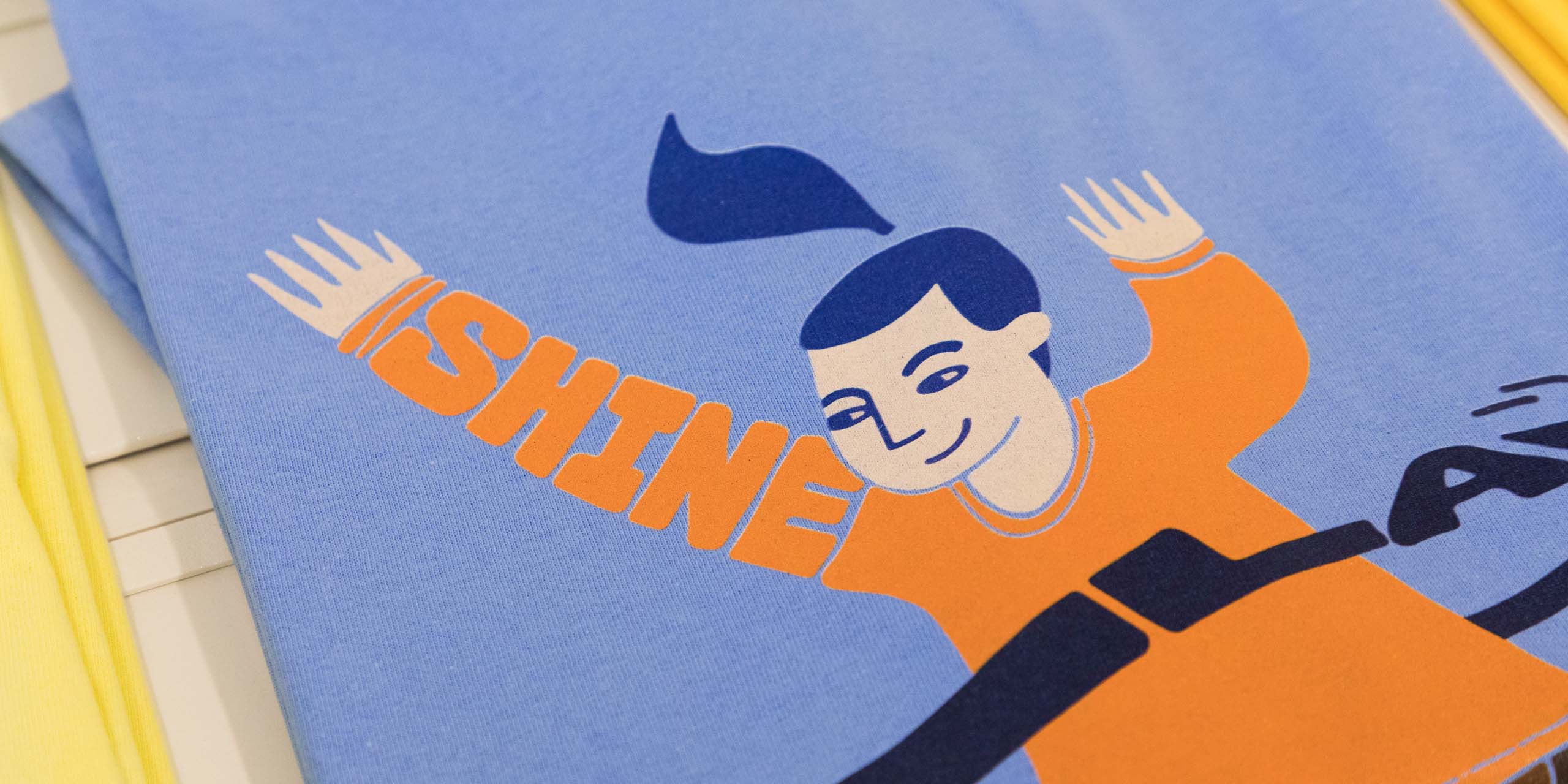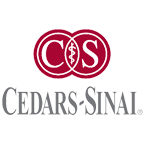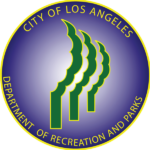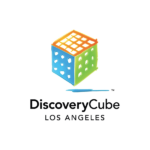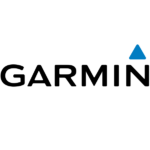Game On: Inspiring a Healthy L.A. for 2028 Advertising Project
- Global Health
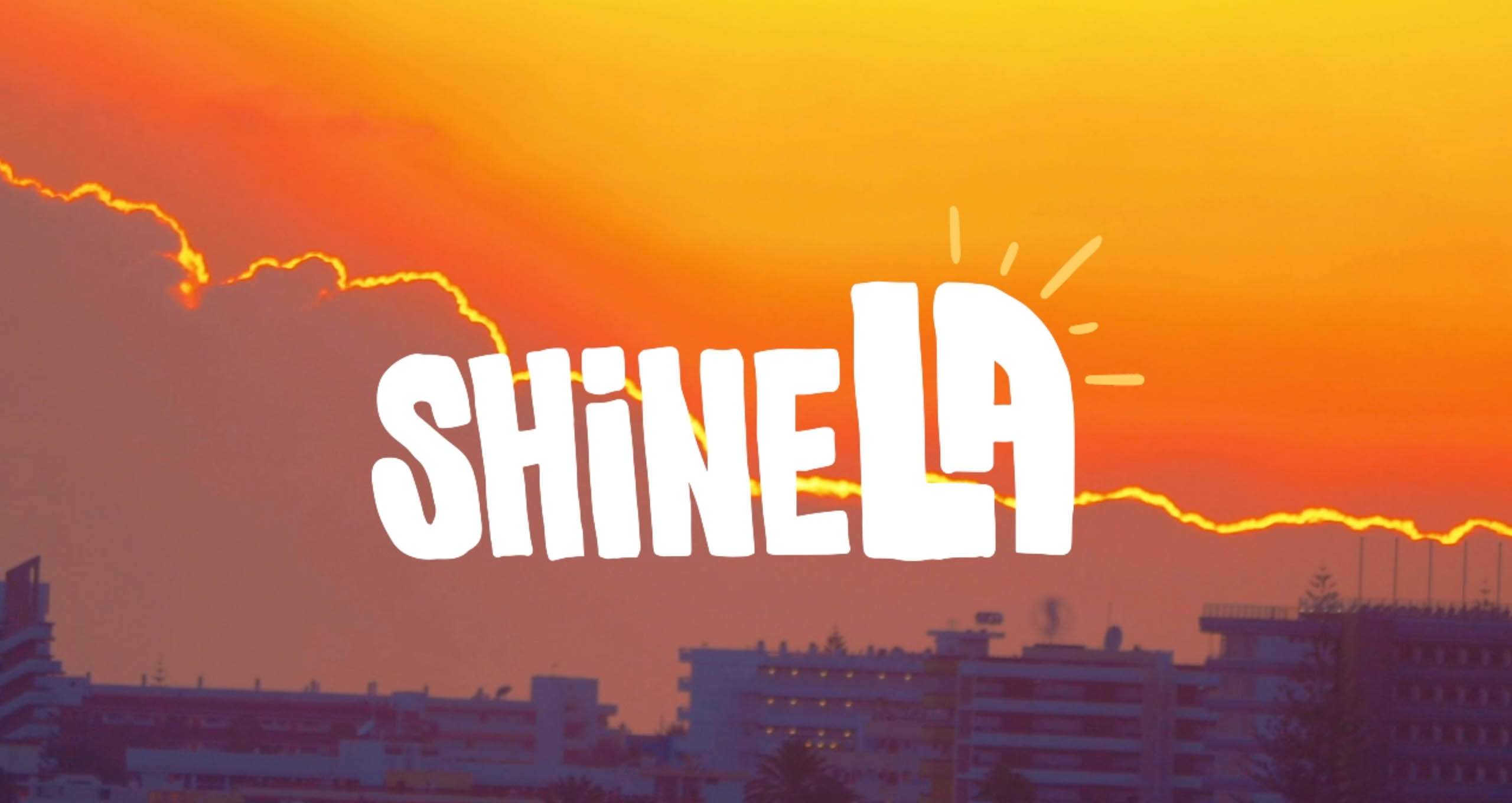
This Designmatters Advertising studio is the second part of a multi-term partnership with Cedars-Sinai Research Center for Health Equity focused on a new city-wide health initiative to engage Los Angeles residents — especially children and families in underserved communities — in healthy and community-building activities in advance of the 2028 Olympics. Los Angeles Department of Recreation and Parks, Discovery Cube and Garmin are additional partners on this exciting and expansive project.
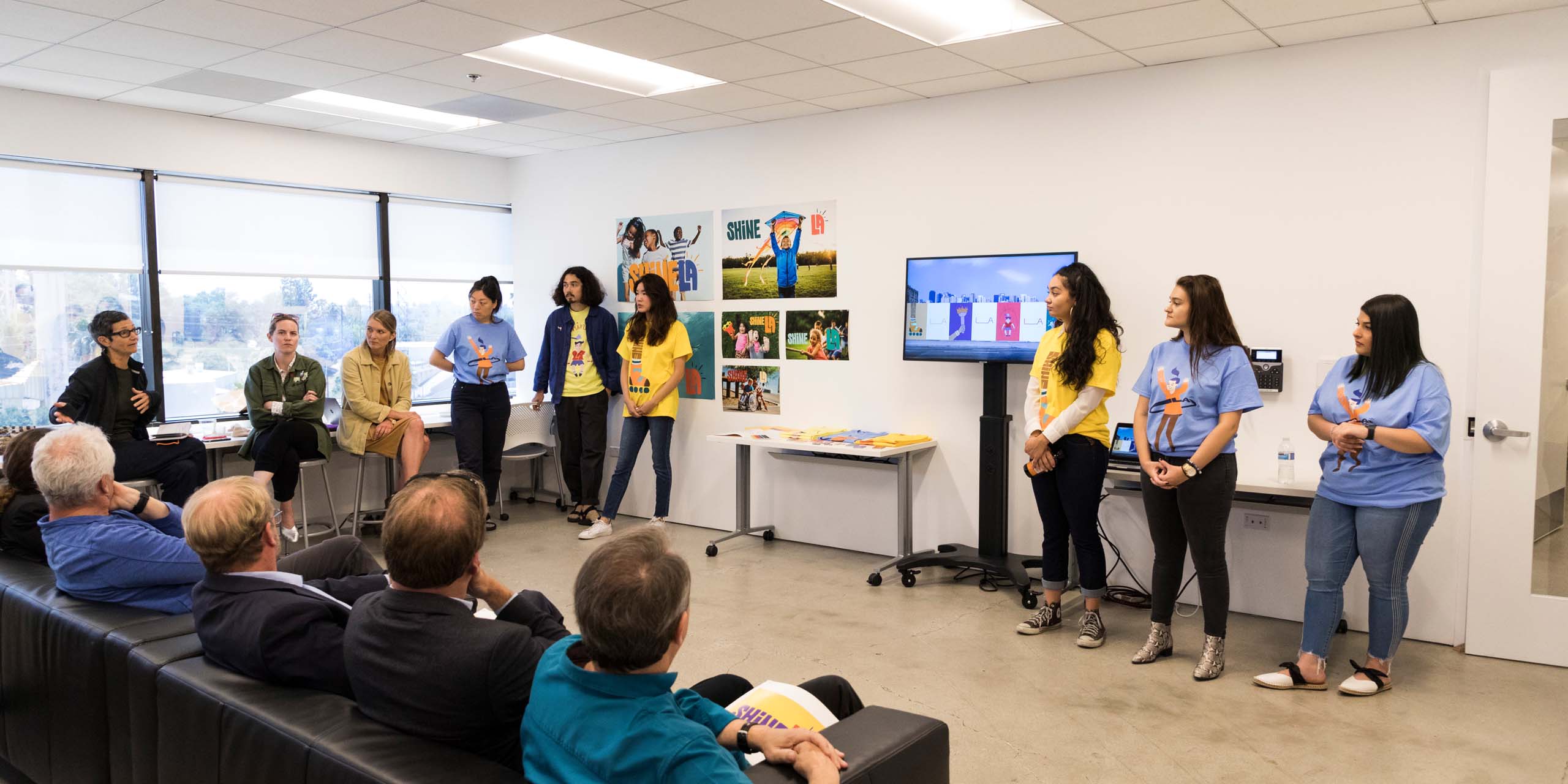
“This campaign is fresh and has a very welcoming feel to it. We serve a lot of youth around L.A. — last year 100,000 enrolled in our programs — and one of our largest concerns is making sure kids feel comfortable playing in and coming to our parks and centers. We don’t necessarily care if kids aren’t athletic. We are not trying to develop professional athletes through our programs. We are trying to reach and engage those kids into our park system and to encourage them to enjoy physical activity that could spark lifelong habits. This campaign addresses all of that.”
– Michael Shull, General Manager, the City of Los Angeles Department of Recreation and Parks
Project Brief
This Designmatters studio challenged ArtCenter Advertising students to develop a colorful and engaging city-wide brand campaign that will encourage Angelenos (individuals, families, neighborhoods) to be active and be involved in their communities and at their local City of Los Angeles Department of Recreation and Parks centers. The campaign includes an overarching narrative that reflects L.A.’s diverse cultural heritages, as well as storytelling elements to promote neighborhood pride and encourage young residents in underserved communities to adopt healthier lifestyles through simple “nudges” to physical activities.
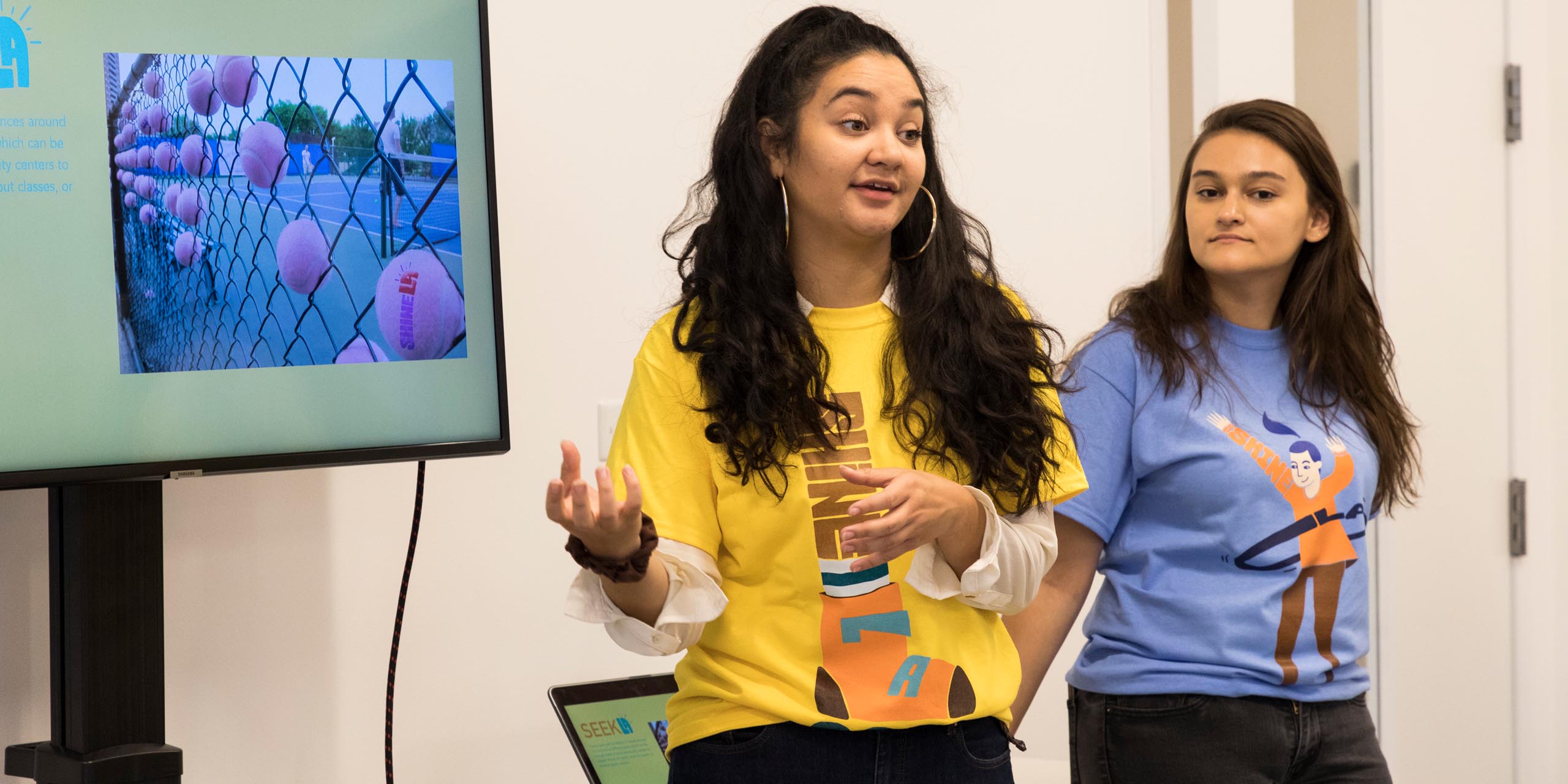
“We have been thinking about how to get people to change behavior, and seeing the student’s visual and engaging interpretation — done in a relative short amount of time — was exciting for us. This is a campaign that feels like it could be out there alive in Los Angeles tomorrow. As with in the previous Game On studio, we are just so impressed how easily the students took all the comments we had and incorporated them into a professional and working presentation.”
– Celina H. Shirazipour, PhD, Faculty, Research Center for Health Equity
About Cedars-Sinai Research Center for Health Equity
The Cedars-Sinai Research Center for Health Equity seeks to address inequalities that exist in Los Angeles County’s underserved communities through research, service and policy advocacy on local and state levels.
Developed as part of the Samuel Oschin Comprehensive Cancer Institute at Cedars-Sinai, the Center encompasses a wide range of research, from molecular/genetic to behavioral and research-driven community outreach and engagement (COE). The Center has established partnerships with many diverse Los Angeles-area community organizations and collects research at the state, national and international levels.
COE efforts focus on compliance with cancer screening guidelines and major behavioral and lifestyle factors, including physical activity levels, cigarette smoking habits and access to the latest and most accurate cancer information.
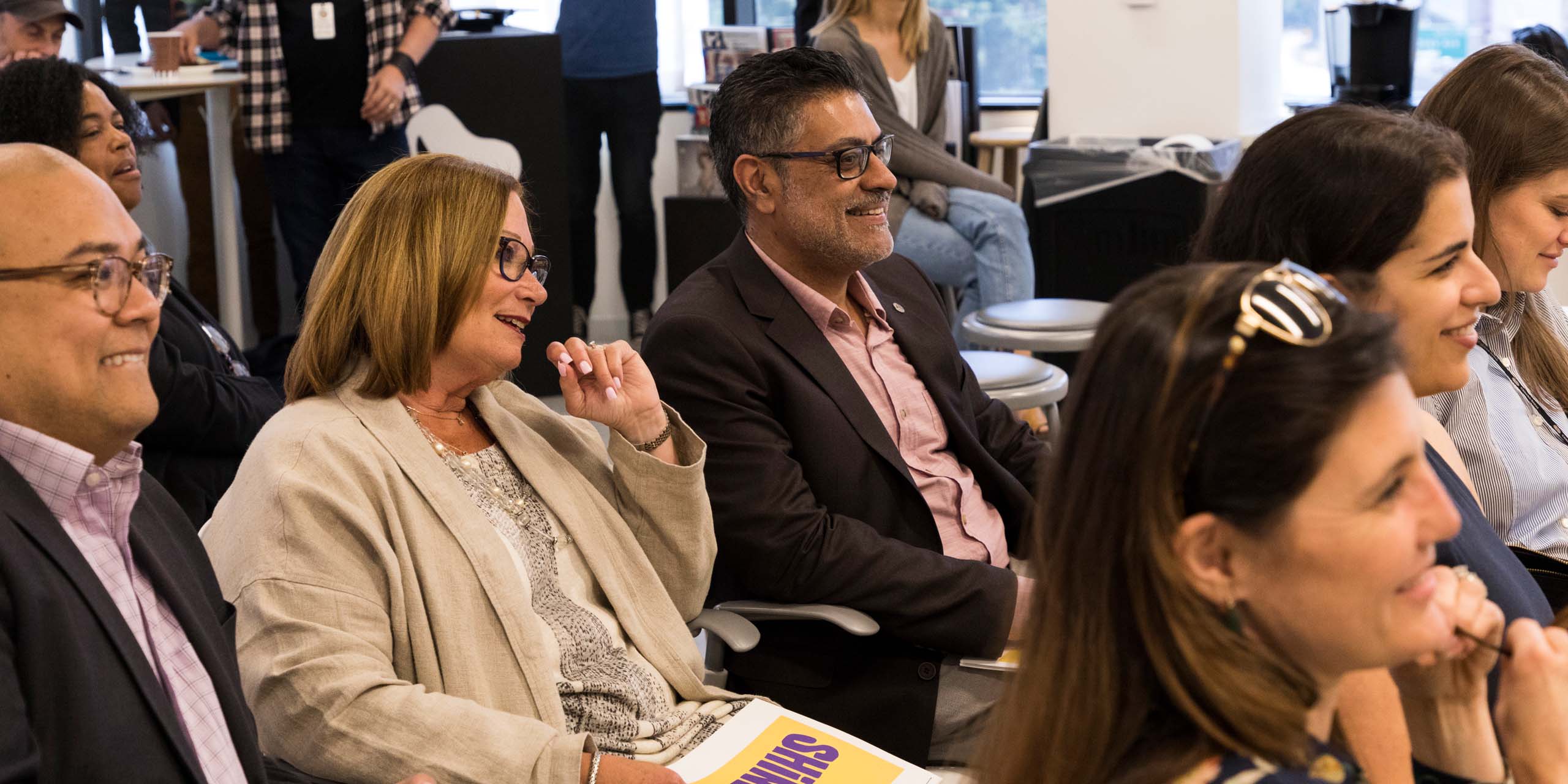
“This class taught me how to understand different people’s perspectives and what their lives are like. It gave me a glimpse beyond my experiences to a broader world view.”
– Chelsea Lee, Student, Advertising
About the City of Los Angeles Department of Recreation and Parks
As stewards to more than 16,000 acres of parkland, the City of Los Angeles Department of Recreation and Parks (RAP) offers extensive recreational, social and cultural programs at 444 park sites encompassing every Los Angeles neighborhood. As one of the City’s most comprehensive social service providers, RAP offers diverse programming targeting youth, adults and seniors. In a typical year, more than 100,000 youth participate in a RAP program citywide.
In addition to playgrounds and recreation/senior centers, RAP maintains and operates skate parks, tennis courts, fitness areas, swimming pools and aquatic centers, dog parks and summer youth camps.
While enjoyed by residents, many RAP properties — such as Venice Beach, Cabrillo Marine Aquarium and Griffith Park — also annually attract millions of visitors from around the world. RAP works to enhance the safety and enjoyment of all park patrons, increase recreational programming and support greater park access and equity while implementing increased sustainable practices and projects as well as maximizing private-public partnerships.
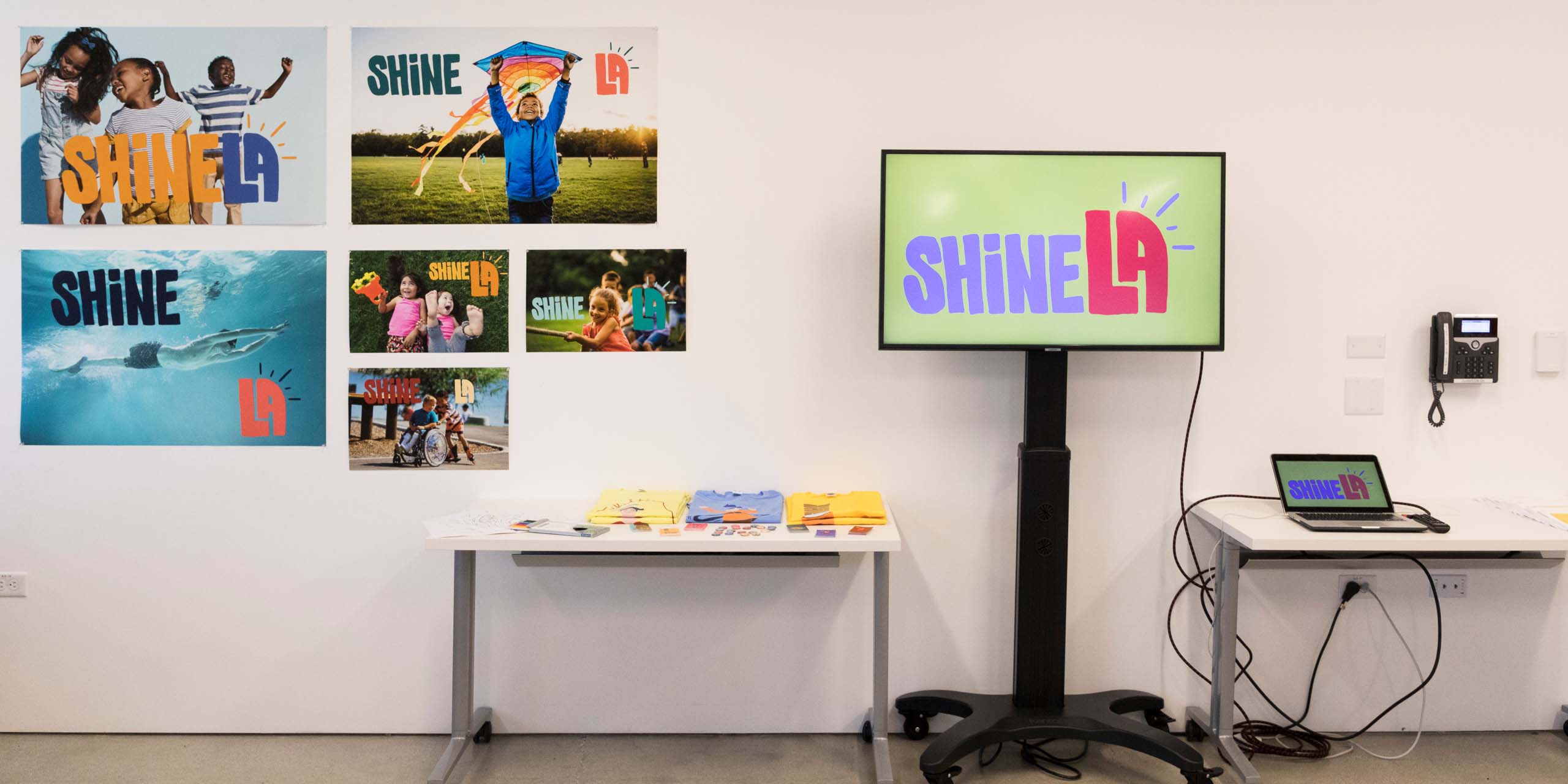
“Our relationship with Designmatters is certainly a two-way street. They have helped us to think deeply about what we want to do and we, in turn, helped them refine and improve upon their work. We emerged out of this experience with a better understanding of what we want to accomplish — and we couldn’t have done that on our own. We needed someone like Designmatters to push us, otherwise we would have just stayed in our comfort zone.”
– Robert Haile, Director, Cedars-Sinai Research Center for Health Equity
Research and Project Development
At the project kick-off, students reviewed the project brief and materials from the earlier Game On Product Design Studio which, in advance of the Los Angeles Olympic 2028 Games, focused on the role of technology in a city-wide health initiative that would engage citizens to pursue physical activities, as well assist health researchers at Cedars-Sinai to effectively gather and analyze behavioral data.
The students learned that additional stakeholders to the Game On project include the Los Angeles Department of Recreation and Parks (RAP), Discovery Science Cube Los Angeles and Garmin International.
Students reviewed the proposed technology-based and low-tech solutions from the Game On Product Design Studio designed to easily connect residents to simple physical activity options found at their neighborhood RAP centers and local parks. They also examined the secondary research provided by Cedars-Sinai about the importance of physical activity and active play.
Students attended the Game On Product Design Final Presentation to examine the final overarching concepts, hear stakeholder feedback and be introduced to specific cultural metaphors that could be used in the subsequent advertising and branding campaign.
Before the students could initiate any drawings or sketches, however, they learned they needed to determine the Big Idea — the important underlying message of their campaign. They also needed to identify their target audience, and discover the best, most effective and efficient way to communicate that message.
The students determined their target audience would be the youth of Los Angeles in underserved communities, and knew their messaging needed to be easily translatable and able to be spread across socio-economic neighborhoods and vicinities. The concept needed to be big and authentic enough to work on a broad level while allowing the campaign to address specific audiences in a fun and thoughtful way.
During the research phase, students visited various RAP centers across Los Angeles, observing who used those facilities, and how facilities and programs were being utilized. Students also engaged in other secondary field research, exploring the complex topics of public health, citizen science and community engagement.
Merging insights gleaned from their research and the existing final Game On presentations, the students began the ideation process, examining alternative communication strategies that could instantaneously connect to the viewer. Students explored nuances and visual language vehicles as they investigated typographic expressions geared to their target audience.
Students divided into three teams to develop branding approaches that employed illustrations, photography and logo design as well as community experience opportunities, partnership possibilities, and merchandise options that could be part of the overall campaign.
As part of an informal “Tissue Session,” stakeholders were invited to view a presentation of the teams’ three conceptual designs. Stakeholders provided honest, constructive feedback on the proposed campaigns, commenting on the strengths and appropriateness of each as well as offering suggestions on how to move forward.
Considered a collaborative working meeting, this session proved to be pivotal to team members who listened attentively, asked questions and considered how to integrate the comments into the next round of ideation and final production. Specifically, the teams realized they needed their campaigns to incorporate the diversity of neighborhoods in the Los Angeles area and to promote RAP facilities as safe environments for children to run and play freely.
Over the following weeks until the final presentation, the groups unified into one team; they blended concepts from their earlier approaches into one concise message with team members responsible for various branding components and extensions.

“This was lot of work over a 10-week period. What stands out for me — and what makes me proudest — was our ability to internalize the feedback the partners gave to us at the midterm and reform our work while not sacrificing what made it so exciting in the first place.”
– Nathan Bolton, Student, Advertising
Project Outcome
 close
close
Shine LA
Read more
The words “Shine LA” reflect not only the abundance of sunlight and rain-free days people in Southern California experience, but is also an encouragement to individuals to be themselves and to celebrate their communities and individuality as they participate in physical fitness activities.
 close
close
Illustrations
Read more
“Shine LA” wording is incorporated into the colorful illustrations that embody the energy of play that features children happily engaged in simple acts of kinetic movement, such as jumping rope, spinning a hula-hoop, reaching up to dunk a basketball, etc. Children are portrayed across a wide range of ethnic groups as well as physical abilities.
Additionally, these bright primary colored images can overlay onto actual photographs of typical Los Angeles RAP locations, such as community swimming pools, skate parks and open fields, as a mixed media treatment. These eye-catching images can be used as posters, on bus benches, baseball fences and construction sites as well as shared electronically through social media.
 close
close
Logo Options
Read more
The physical words Shine LA are creatively interpreted into the immediately recognizable imagery of carrying the Olympic torch, jump-roping and splashing into a pool, cannonball style. Logos also can split up the words Shine and LA for a dramatic graphic design treatment.
The Shine LA logo can be incorporated on the MetroCard transit pass and other well-used municipal product items.
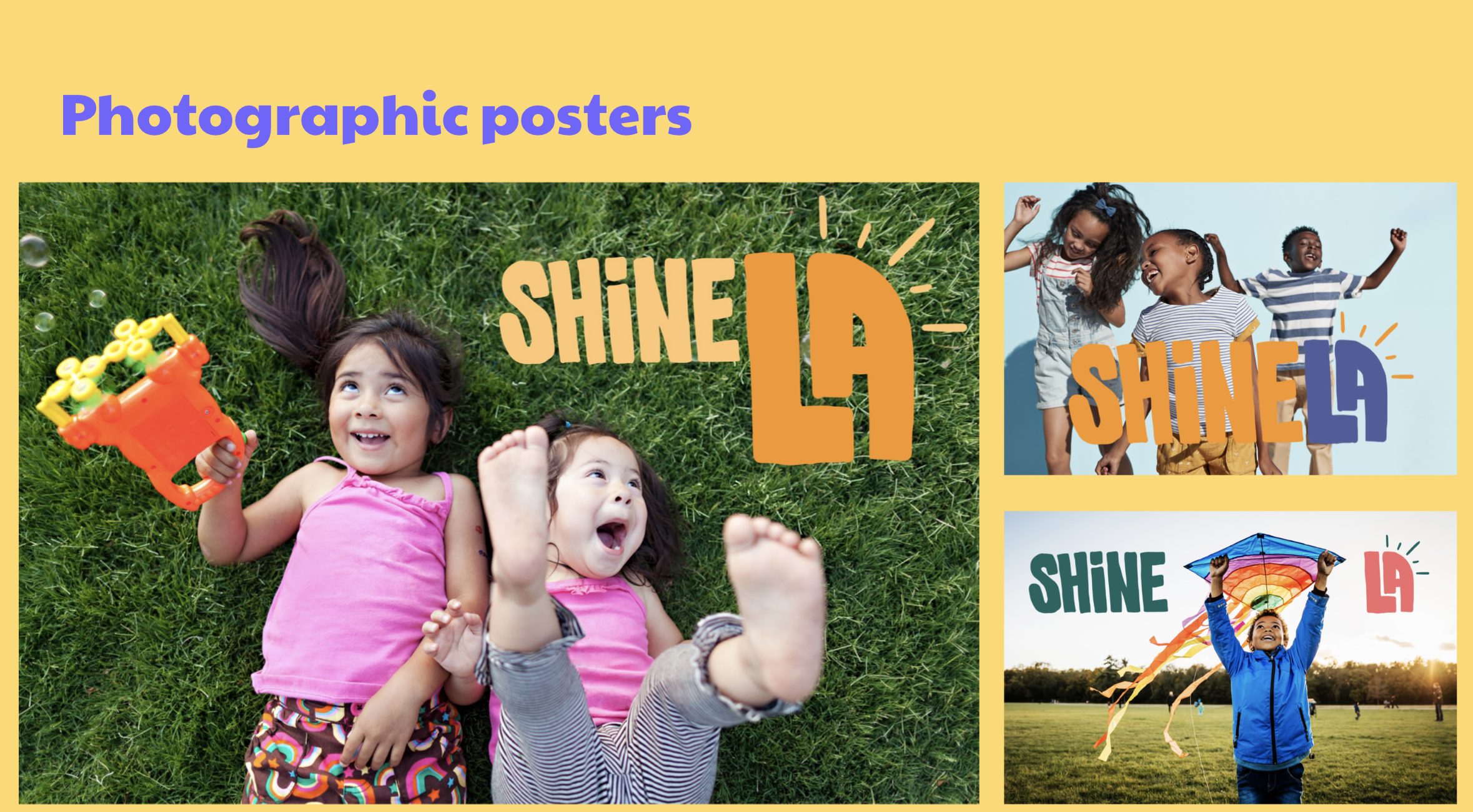 close
close
Photographic
Read more
As a way to showcase the diversity of Los Angeles and the different ways to be physically active, large photographic posters feature young people engaged in fun and simple outdoor activities (kite-flying, swimming, tug-o-war) that are overlaid with the graphic version of the Shine LA logo. The bold imagery can be presented on billboards and other outdoor treatments.
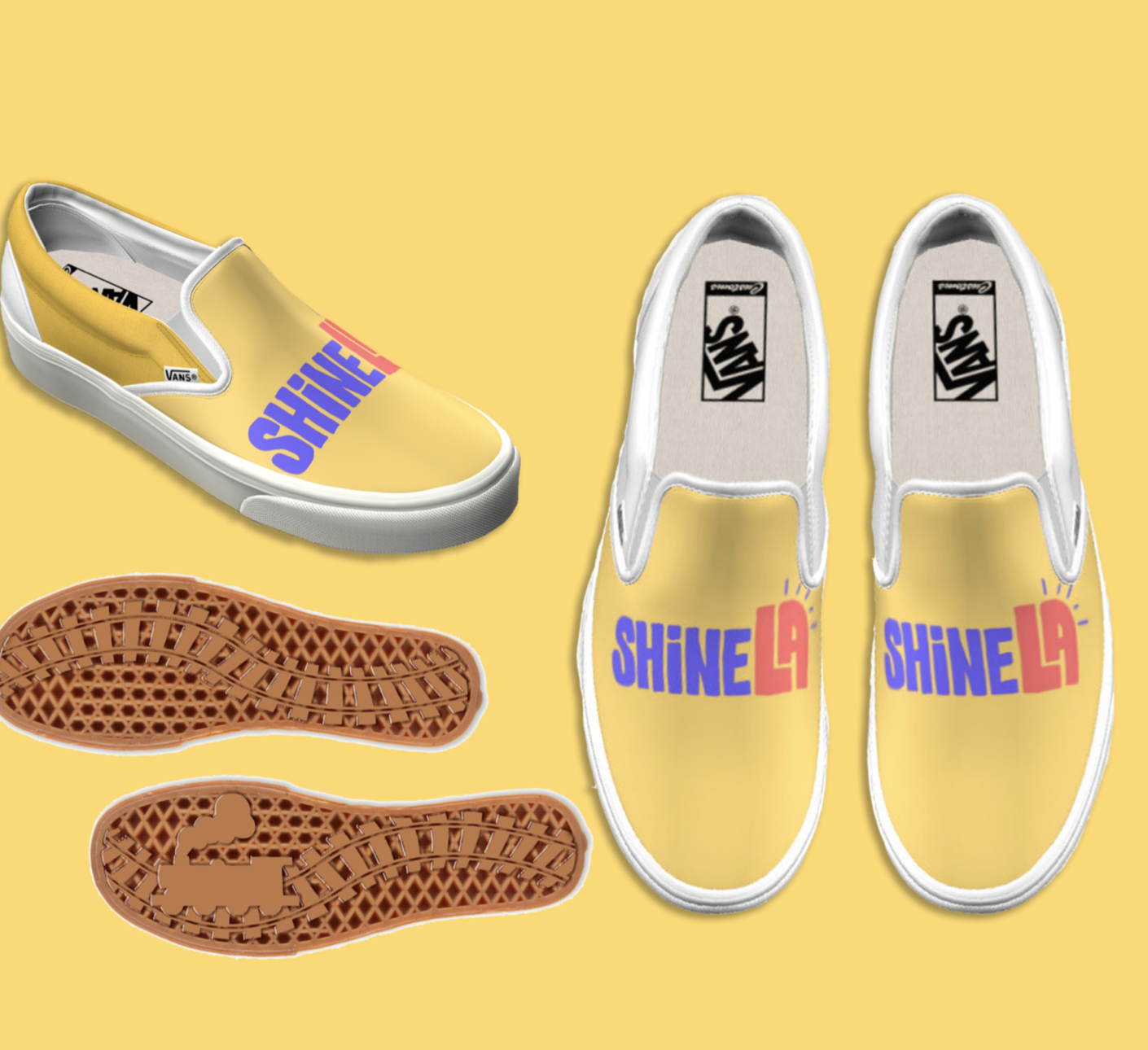 close
close
Brand Extensions
Read more
To complement the branding, various applications and mini pop-up type events can raise awareness of the campaign, as well as transform the surroundings that residents see every day into special occasions/discoveries.
Seek LA involves a community-wide “hide and seek” where special tennis balls are hidden in fences around the city and at different parks. Participants find the balls and bring them to their community center in exchange for Shine LA merchandise, free workout classes or children’s sports lessons.
Party LA invites a big-name partner (such as the L.A. Rams) to help throw a block party at a neighborhood, community center or local schoolyard. Artificial turf will be laid down to create an irresistible play surface for an afternoon of family-friendly celebration.
Dance LA teams up with a shoe brand (such as Skechers) to place dance patterns on the sidewalks of Los Angeles. Follow the footsteps (which can be stenciled on the sidewalk) and learn a dance move while waiting for the bus, or for the light to change. Dance patterns will be placed in Instagram-friendly locations.
Stomp LA welcomes shoe brand Vans to re-design their classic sole waffle pattern into customizable options that appeal to kids who stomp in mud, water, etc. to create train tracks, dinosaur feet, paws and other fun patterns.
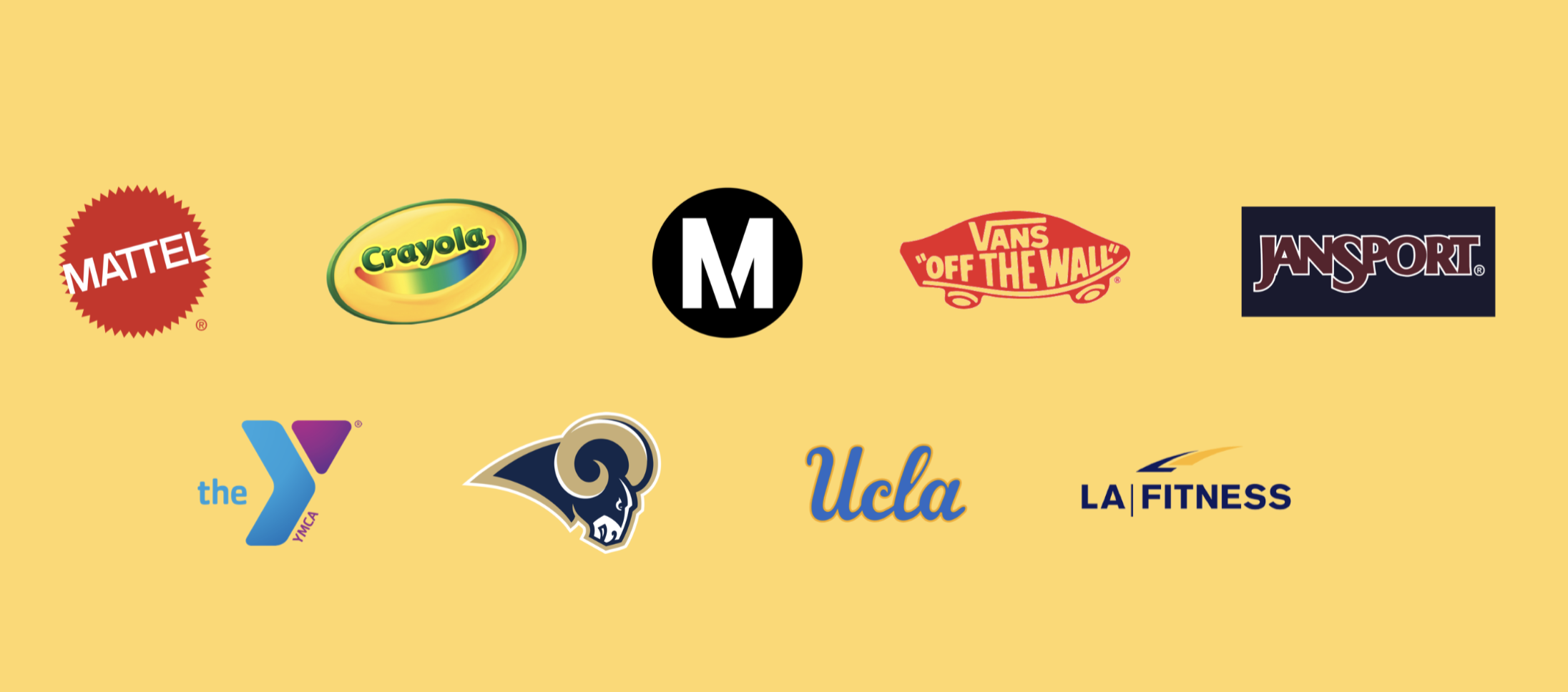 close
close
Partnership Possibilities
Read more
The Shine LA campaign can reach out to local companies and well-known institutions to create additional events and opportunities to encourage Angelenos to engage in physical fitness as well as promote neighborhood pride. Sample list could include such organizations as Mattel, Crayola, YMCA, UCLA and LA Fitness.
Video Content
Next Steps
A team of ArtCenter students will be selected to be on a Summer Designmatters/LaunchLab Fellowship Team to continue to develop concepts from the two Game On studios into a full campaign and Minimum Viable Product for Cedars Sinai to consider for pilot testing in 2020.
